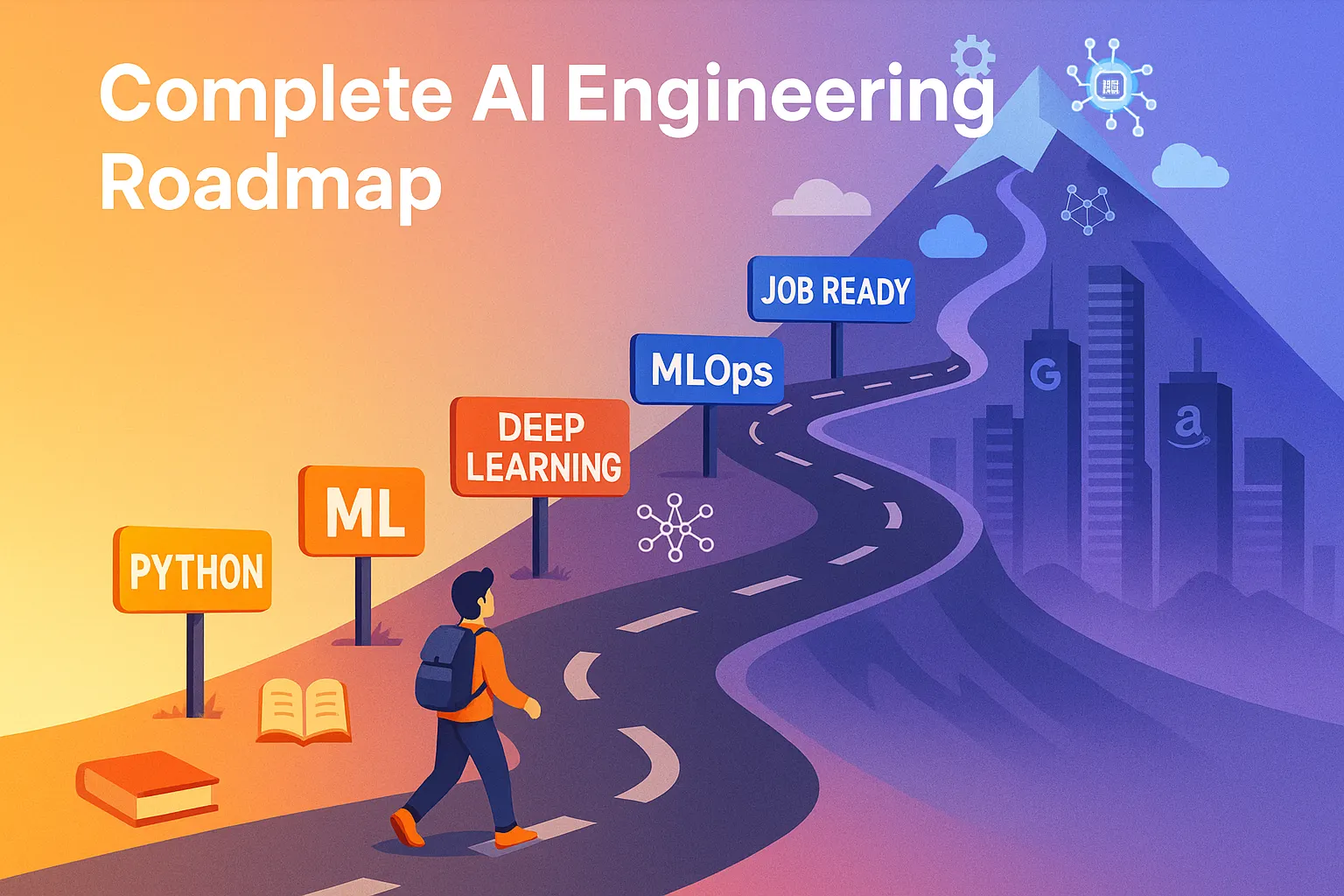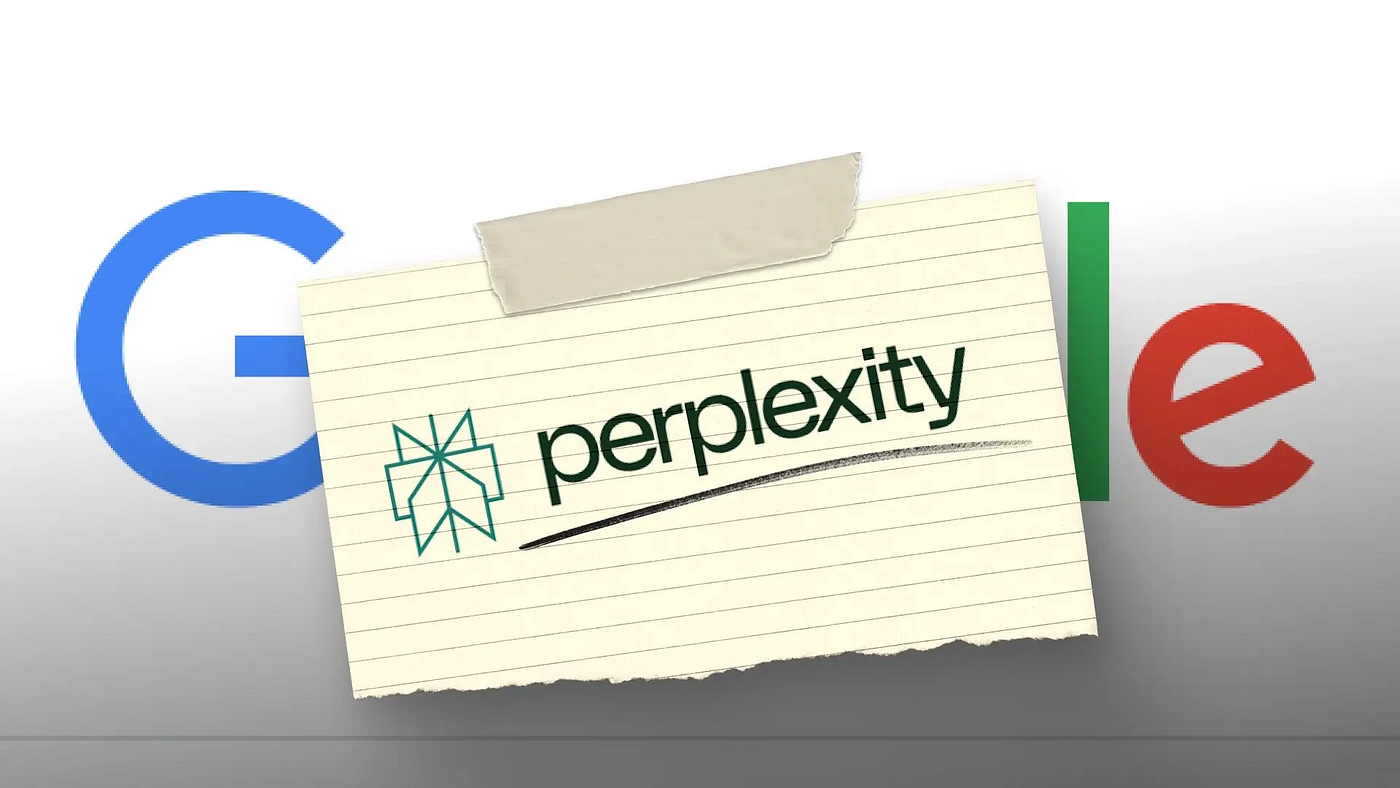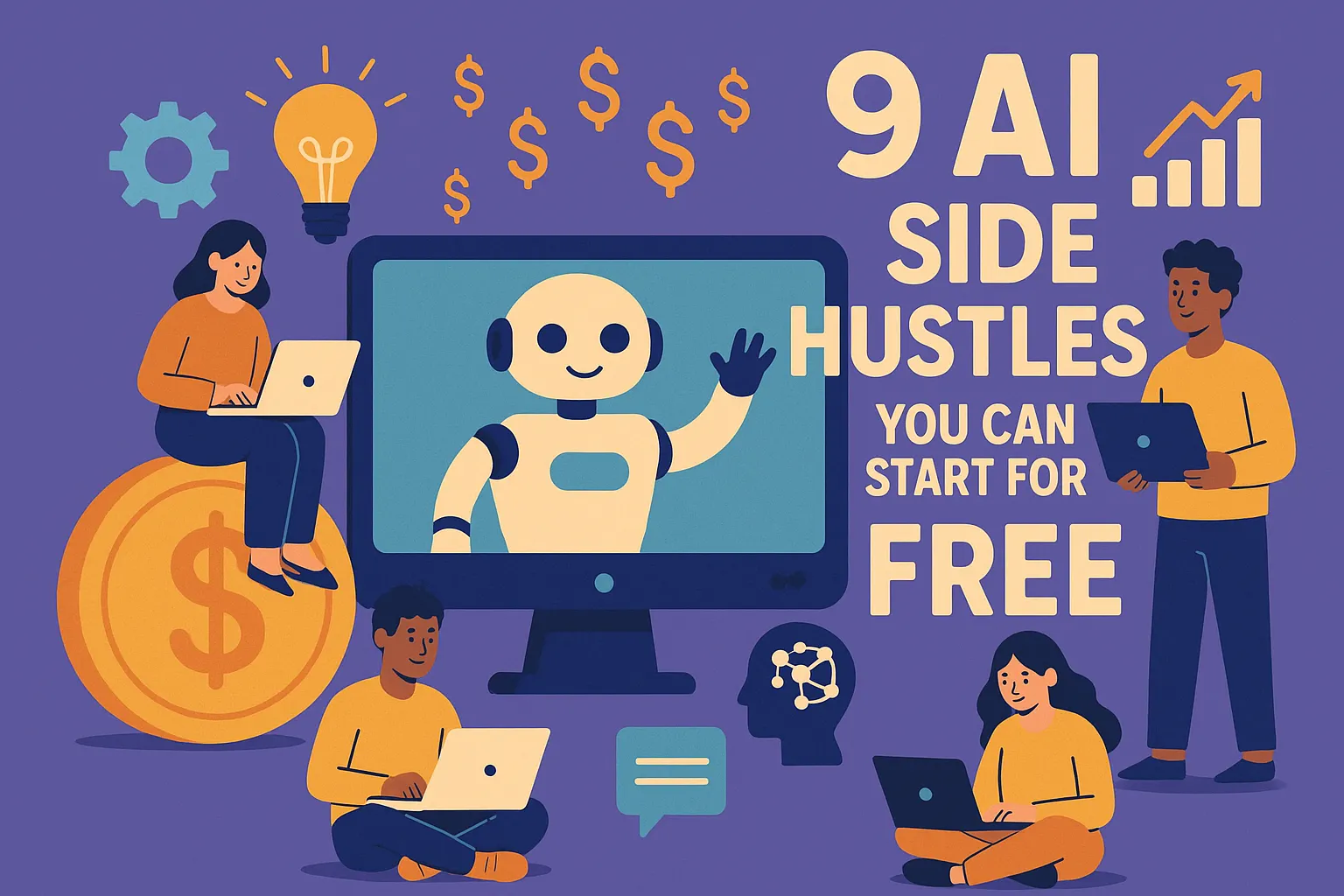Your friendly guide to breaking into the world of AI Engineering
Hey there, future AI engineer! 👋
Feeling overwhelmed by all the AI buzz and wondering where to start? Don’t worry. This roadmap will take you from “What’s AI?” to building real AI systems, one step at a time. Think of this as your GPS for the AI journey ahead!
🎯 What Exactly is AI Engineering?
Before we dive in, let’s clear something up. AI Engineering isn’t just about building chatbots (though that’s pretty cool too!). As an AI Engineer, you’ll:
- Design and build AI systems that solve real problems
- Work with data to train machine learning models
- Deploy AI applications that millions of people might use
- Bridge the gap between research and real-world applications
- Collaborate with data scientists, software engineers, and product teams
Think of yourself as the architect who takes AI research and turns it into something people can actually use!
📚 Phase 1: Building Your Foundation (2–3 months)

1. Programming Fundamentals
Start with Python — it’s the lingua franca of AI, and honestly, it’s pretty beginner-friendly too!
Essential Resources:
- 📖 Python.org Official Tutorial (Free)
- 🎥 Automate the Boring Stuff with Python (Free online book)
- 🎓 Python for Everybody Specialization (Coursera)
What to Focus On:
- Variables, loops, functions, and classes
- Working with files and data
- Understanding libraries and packages
- Basic debugging skills
2. Mathematics Refresher
Don’t panic! You don’t need a PhD in math, but these concepts will make everything else click:
Linear Algebra:
- Vectors and matrices (think of them as data containers)
- Basic operations (addition, multiplication)
- 📖 3Blue1Brown Linear Algebra Series (YouTube — Visual and intuitive!)
Statistics & Probability:
- Mean, median, standard deviation
- Probability distributions
- 📖 Khan Academy Statistics (Free)
Calculus Basics:
- Derivatives (rates of change)
- Chain rule (how changes propagate)
- 📖 Khan Academy Calculus (Free)
3. Data Manipulation Skills
Learn These Libraries:
- NumPy: For numerical computing
- Pandas: For data manipulation (your new best friend!)
- Matplotlib/Seaborn: For creating visualizations
Hands-on Resources:
- 🎓 Pandas Bootcamp (Kaggle Learn — Free)
- 🎥 Data Analysis with Python (freeCodeCamp)
🧠 Phase 2: Machine Learning Fundamentals (3–4 months)
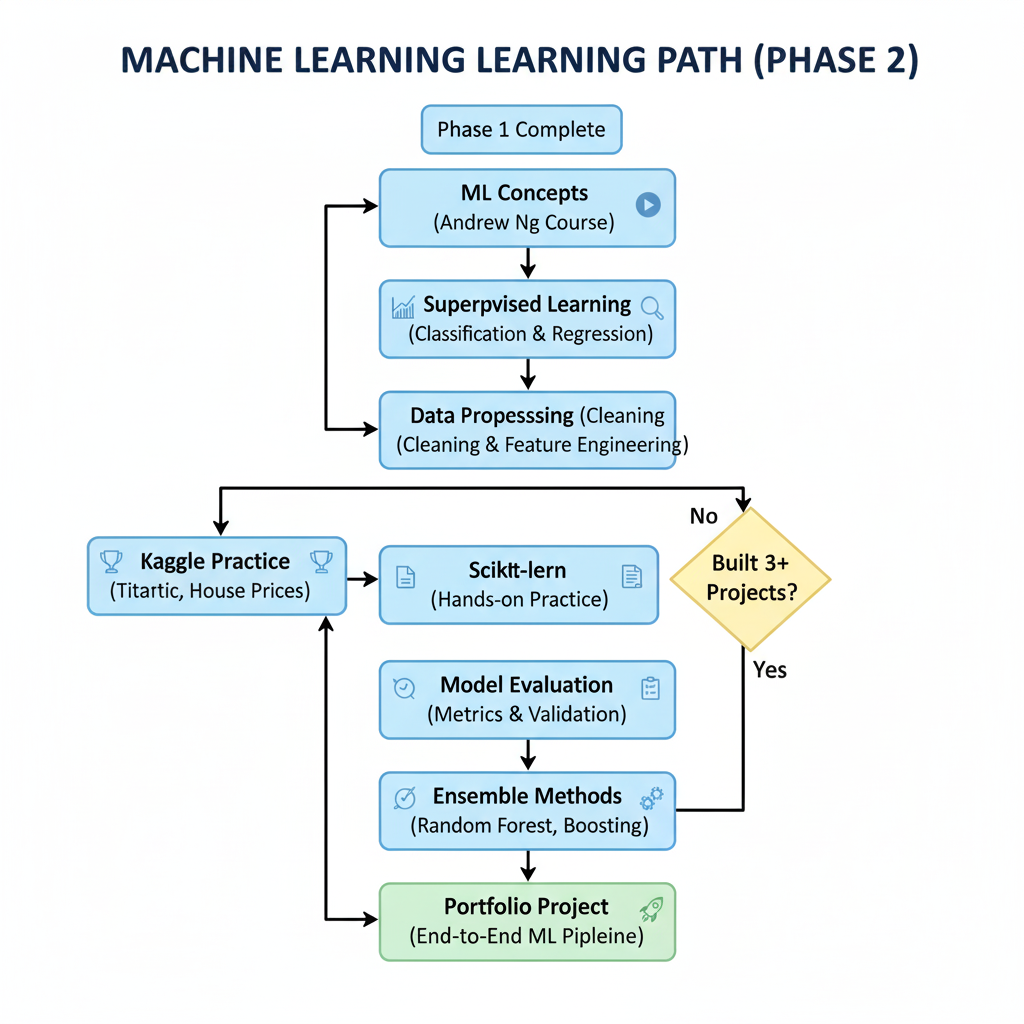
Understanding ML Concepts
Start Here:
- 🎓 Andrew Ng’s Machine Learning Course (Coursera — The gold standard!)
- 📖 Hands-On Machine Learning by Aurélien Géron
Key Concepts to Master:
- Supervised vs Unsupervised learning
- Training, validation, and test sets
- Overfitting and underfitting
- Feature engineering
- Model evaluation metrics
Practical ML with Scikit-learn
Essential Skills:
- Data preprocessing
- Model selection
- Cross-validation
- Hyperparameter tuning
Hands-on Practice:
- 🏆 Kaggle Learn ML Course (Free + practice datasets)
- 🎯 Start with simple datasets like Titanic or House Prices
Popular Algorithms to Understand
Don’t try to memorize everything! Focus on understanding when to use what:
Classification:
- Logistic Regression
- Decision Trees
- Random Forest
- Support Vector Machines
Regression:
- Linear Regression
- Polynomial Regression
- Ridge/Lasso Regression
Clustering:
- K-Means
- Hierarchical Clustering
🚀 Phase 3: Deep Learning & Neural Networks (4–5 months)
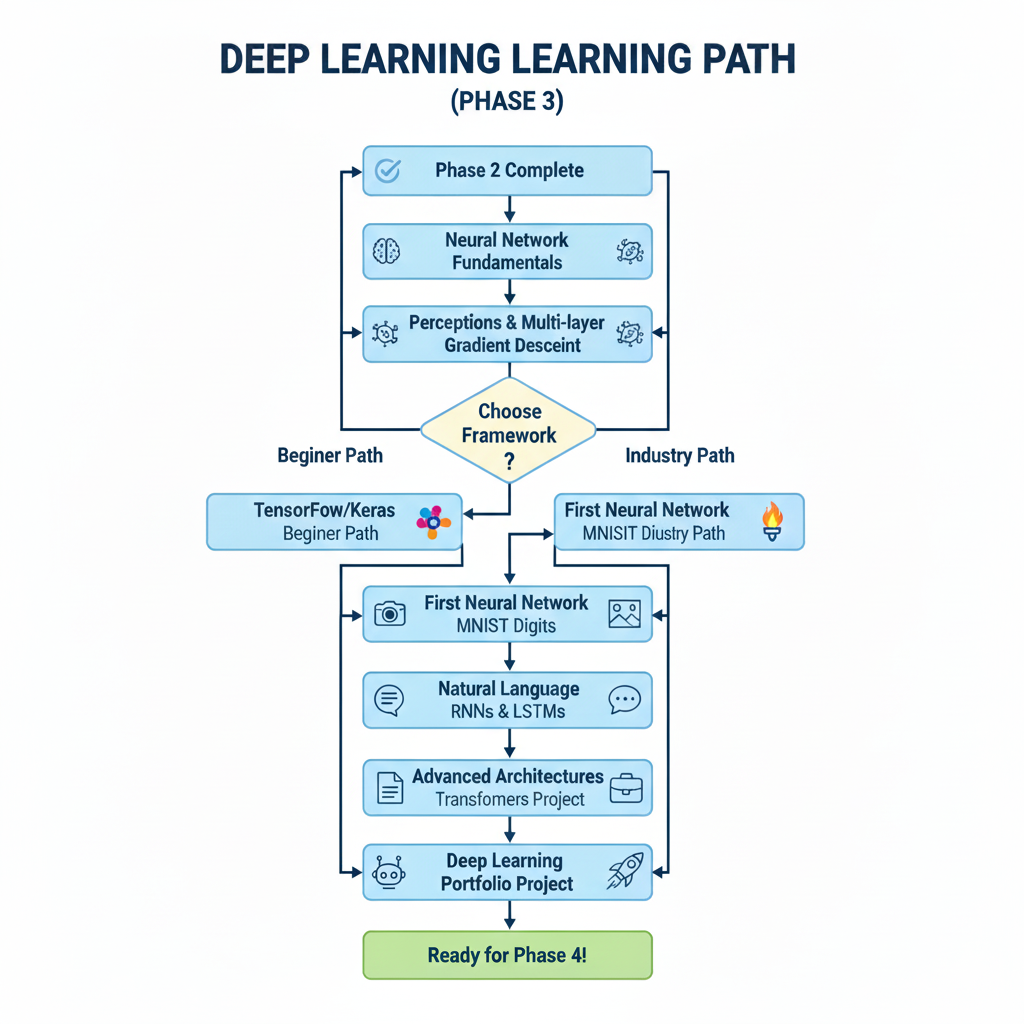
🚀 Phase 3: Deep Learning & Neural Networks (4–5 months)
Neural Network Fundamentals
Start with the Basics:
- 🎥 Neural Networks Explained (3Blue1Brown — Amazing visualizations!)
- 🎓 Deep Learning Specialization (Coursera — Andrew Ng again!)
Key Concepts:
- Perceptrons and multi-layer networks
- Backpropagation (how networks learn)
- Activation functions
- Gradient descent optimization
Hands-on with Deep Learning Frameworks
TensorFlow/Keras (Beginner-friendly):
PyTorch (Industry favorite):
- 📖 PyTorch Tutorials
- 🎥 PyTorch for Deep Learning (freeCodeCamp)
Specialized Neural Networks
Computer Vision:
- Convolutional Neural Networks (CNNs)
- Image classification projects
- 🎯 Try: Build a cat vs dog classifier!
Natural Language Processing:
- Recurrent Neural Networks (RNNs)
- LSTM and GRU networks
- 🎯 Try: Sentiment analysis of movie reviews
Practice Projects:
- Image classification with CIFAR-10
- Text sentiment analysis
- Simple recommendation system
🔧 Phase 4: AI Engineering Tools & Practices (2–3 months)
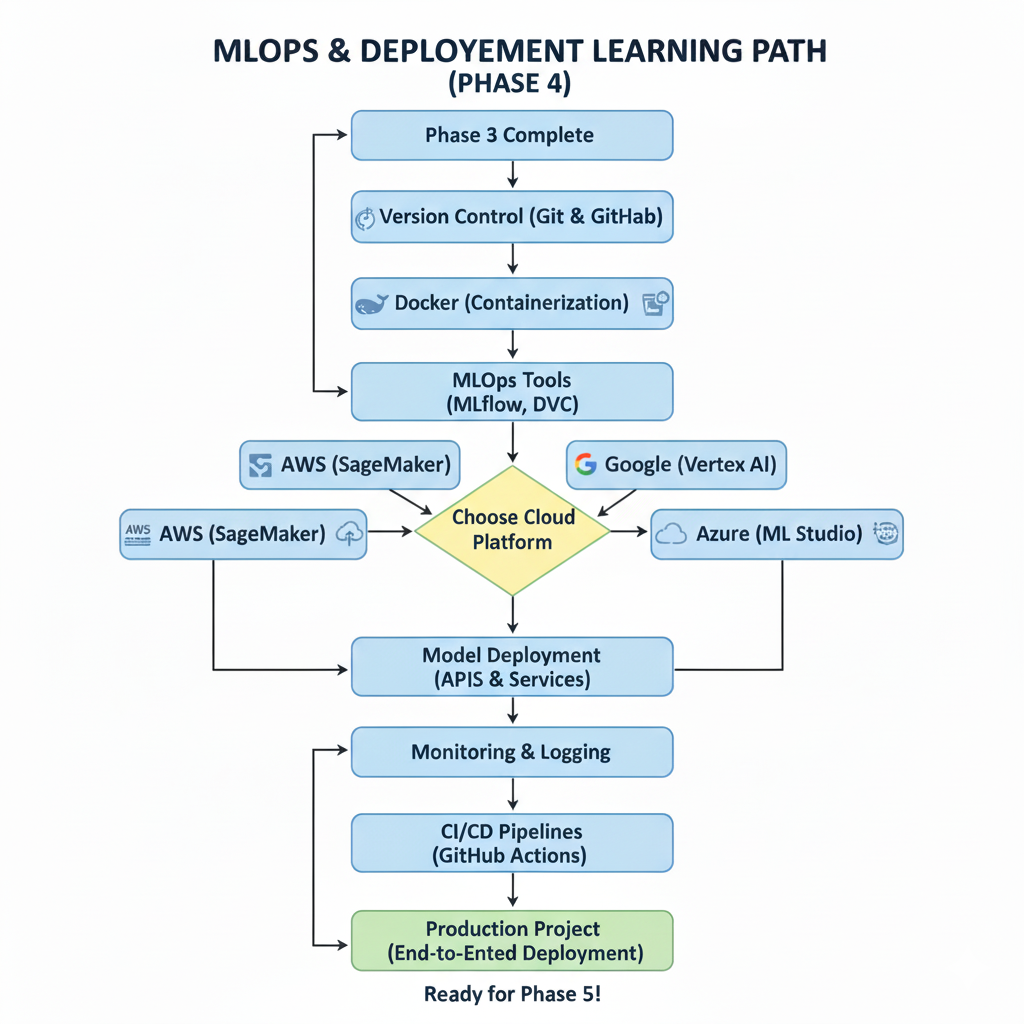
🔧 Phase 4: AI Engineering Tools & Practices (2–3 months)
Version Control & Collaboration
Git & GitHub:
- 📖 Git Handbook (GitHub)
- 🎥 Git Tutorial for Beginners
Best Practices:
- Meaningful commit messages
- Branching strategies
- Code reviews
MLOps (Machine Learning Operations)
This is where the magic happens — taking models from your laptop to production!
Essential Tools:
- Docker: Containerization for consistent environments
- MLflow: Experiment tracking and model management
- DVC: Version control for data and models
Learning Resources:
- 🎓 MLOps Specialization (Duke University)
- 📖 Made With ML (Comprehensive MLOps guide)
Cloud Platforms
Get familiar with at least one:
- AWS: SageMaker for ML, EC2 for compute
- Google Cloud: Vertex AI, Colab Pro
- Azure: Azure ML Studio
Free Tier Resources:
Model Deployment
Learn These Concepts:
- API development with FastAPI or Flask
- Model serving and scaling
- Monitoring model performance in production
Hands-on:
- 🎯 Deploy a simple model as a web API
- 🎯 Create a Streamlit app for your model
🎨 Phase 5: Specialized Tracks (Choose Your Adventure!)
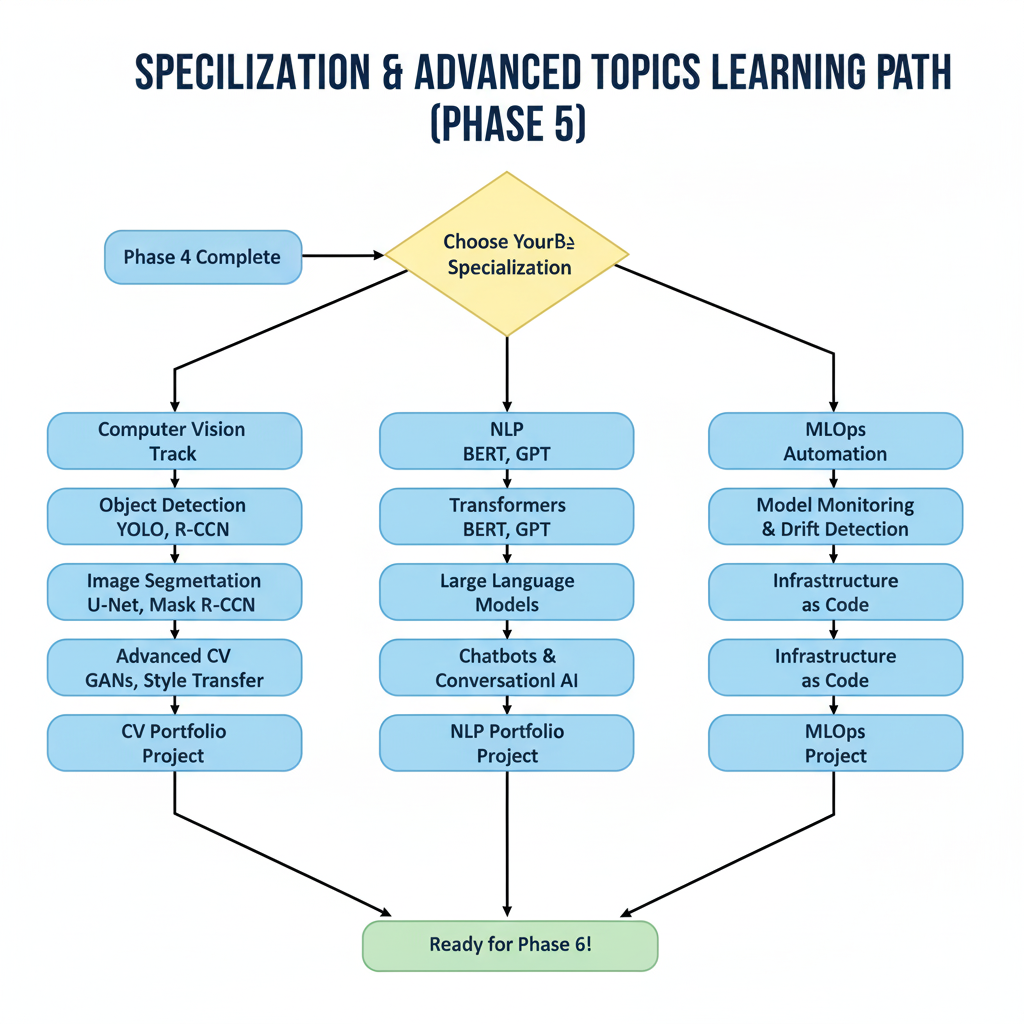
🎨 Phase 5: Specialized Tracks (Choose Your Adventure!)
Track 1: Computer Vision Engineer
Focus Areas:
- Object detection (YOLO, R-CNN)
- Image segmentation
- Facial recognition systems
- Medical imaging
Resources:
- 🎓 Computer Vision Course (Stanford CS231n)
- 📖 OpenCV Python Tutorials
Track 2: Natural Language Processing Engineer
Focus Areas:
- Large Language Models (LLMs)
- Transformers and BERT
- Chatbots and conversational AI
- Text summarization and generation
Resources:
- 🎓 NLP Course (Stanford CS224n)
- 📖 Hugging Face Course (Free and comprehensive!)
- 🎯 Transform with Transformers
Track 3: MLOps Engineer
Focus Areas:
- CI/CD for machine learning
- Model monitoring and maintenance
- Infrastructure automation
- Data pipeline engineering
Resources:
- 📖 Designing Machine Learning Systems by Chip Huyen
- 🎓 MLOps Engineering at Scale
💼 Phase 6: Job Preparation & Portfolio Building (2–3 months)
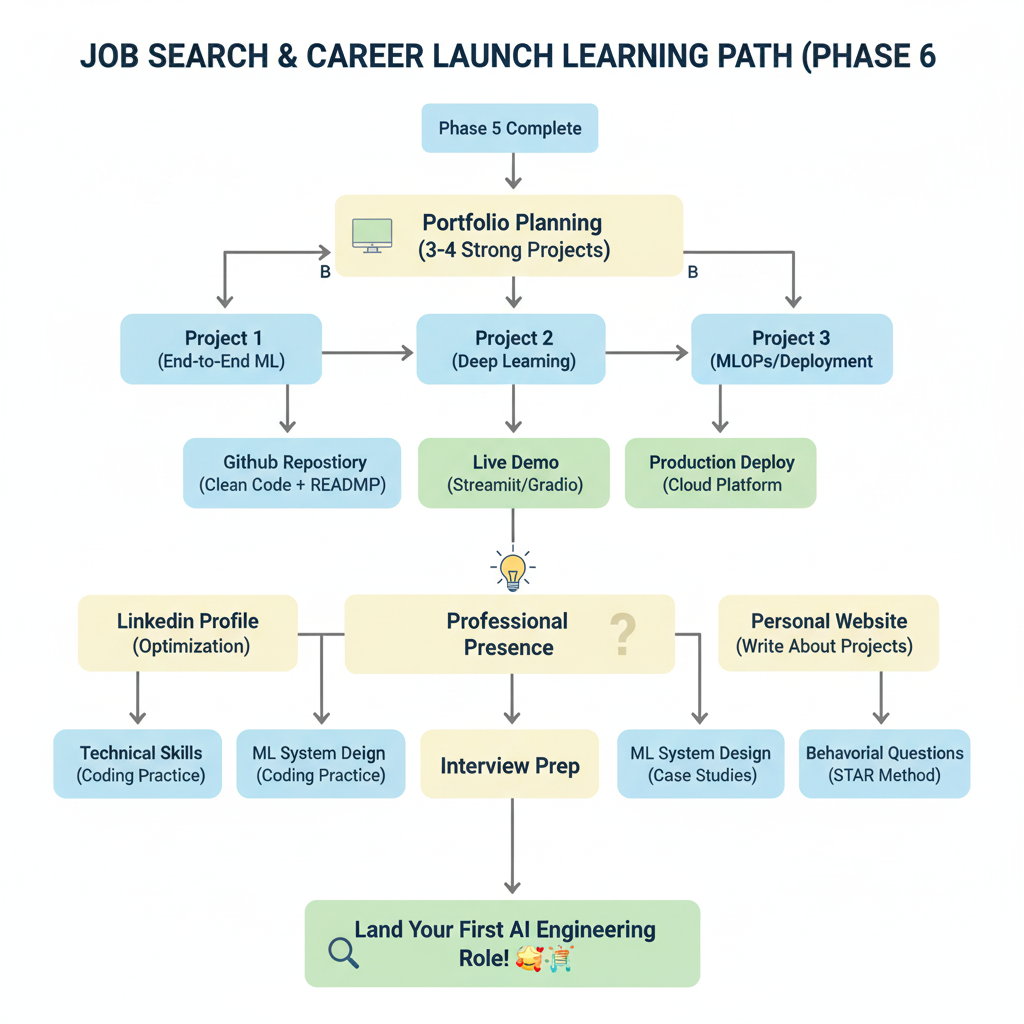
💼 Phase 6: Job Preparation & Portfolio Building (2–3 months)
Building Your Portfolio
Essential Projects (Pick 2–3):
- End-to-End ML Project
- Data collection and cleaning
- Model training and evaluation
- Deployment with monitoring
- 🎯 Example: House price prediction with web interface
2. Deep Learning Project
- Computer vision or NLP focus
- Use pre-trained models and fine-tuning
- 🎯 Example: Custom image classifier for a specific domain
3. MLOps Project
- Automated training pipeline
- Model versioning and deployment
- Monitoring dashboard
- 🎯 Example: A/B testing framework for ML models
4. Portfolio Platforms:
- GitHub (showcase your code)
- Personal website/blog
- Kaggle (participate in competitions)
- LinkedIn (professional presence)
Resume & Interview Preparation
Technical Interview Resources:
- 📖 Cracking the Coding Interview
- 🎯 LeetCode (Practice coding problems)
- 📖 Introduction to Statistical Learning (Free PDF)
AI-Specific Interview Prep:
- 📖 The AI Interview Guide (Free GitHub resource)
- 🎥 Machine Learning Interview Questions (Various YouTube channels)
Common Interview Topics:
- Explain machine learning algorithms in simple terms
- Design an ML system for a specific problem
- Code a simple algorithm from scratch
- Discuss trade-offs in model selection
- Explain how you’d debug a poorly performing model
Networking & Community
Join These Communities:
- Reddit r/MachineLearning
- AI Twitter community (Follow AI researchers and practitioners)
- LinkedIn AI groups
- Local meetups and conferences
📈 Continuous Learning & Staying Updated
Follow These Resources
Blogs & Newsletters:
- Towards Data Science (Medium)
- The Gradient
- AI Research Blog (Google)
- OpenAI Blog
Podcasts (Great for commutes!):
- Lex Fridman Podcast (AI researchers and leaders)
- The AI Podcast (NVIDIA)
- Machine Learning Street Talk
Research Papers (When you’re ready!):
- Papers with Code (Papers + implementation)
- ArXiv (Latest research)
- Google Scholar (Search academic papers)
🎯 Your 12-Month Action Plan
🎯 Your 12-Month Action Plan
Months 1–3: Foundation
- [ ] Learn Python programming
- [ ] Brush up on math fundamentals
- [ ] Get comfortable with data manipulation
- [ ] Complete your first data analysis project
Months 4–6: Machine Learning
- [ ] Complete Andrew Ng’s ML course
- [ ] Build 2–3 basic ML projects
- [ ] Participate in your first Kaggle competition
- [ ] Learn scikit-learn inside out
Months 7–9: Deep Learning
- [ ] Master neural network fundamentals
- [ ] Choose TensorFlow or PyTorch and get proficient
- [ ] Build a computer vision project
- [ ] Build an NLP project
Months 10–11: Engineering Skills
- [ ] Learn MLOps tools and practices
- [ ] Deploy your first model to the cloud
- [ ] Contribute to an open-source project
- [ ] Start building your portfolio
Month 12: Job Ready
- [ ] Polish your portfolio projects
- [ ] Practice technical interviews
- [ ] Network with AI professionals
- [ ] Apply for your first AI engineering roles!
💡 Pro Tips for Success
- Start Small, Think Big: Don’t try to build the next ChatGPT on day one. Master the basics first!
- Practice Regularly: Code every day, even if it’s just for 30 minutes. Consistency beats intensity.
- Learn in Public: Share your progress, write blog posts, engage on social media. It helps you learn and network!
- Don’t Get Lost in Theory: Balance learning with building. The best way to learn is by doing.
- Embrace Failure: Your first models will be terrible. Your code will break. That’s normal and part of learning!
- Stay Curious: AI is evolving rapidly. What excites you? Computer vision? Language models? Follow your interests!
- Find Your Community: Learning alone is hard. Join Discord servers, attend meetups, find study buddies.
- Document Everything: Keep notes, write READMEs, document your learning journey. Future you will thank you!
🚨 Common Pitfalls to Avoid
- Tutorial Hell: Don’t just watch videos endlessly. Build projects!
- Perfectionism: Your first projects don’t need to be perfect. Ship early, iterate often.
- Ignoring the Business Side: Understand how your technical skills solve real problems.
- Not Practicing Coding: AI engineering involves a lot of coding. Practice regularly!
- Comparing Yourself to Others: Everyone learns at their own pace. Focus on your journey.
You’ve Got This!
Remember, every expert was once a beginner. The AI field is incredibly welcoming to newcomers who are passionate and willing to learn. You don’t need a PhD or years of experience to make meaningful contributions.
The key is to start somewhere, be consistent, and keep building. In 12 months, you’ll look back and be amazed at how far you’ve come!
Ready to begin your AI engineering journey? Pick one resource from Phase 1 and start today. The future is built by people who take action, and that person could be you!
Source: https: anirbanmukherjee

